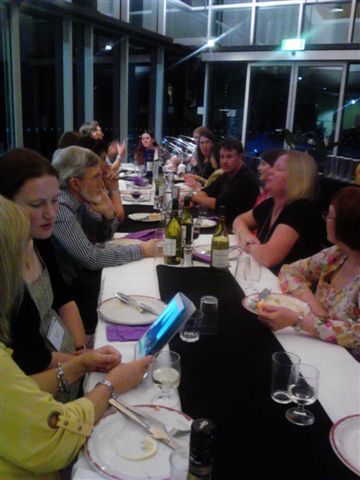More than fifty people from around Australia attended this conference in Melbourne on April 12 – 13. The conference was a reminder of the wonderful worth of Godly Play, that it has been road tested with children for 30 – 40 years and that children need to be encountering God.
Keynotes
In summary, in the keynote from Dr Vivienne Mountain (A counsellor in private practice providing Family, Play, and Art Therapy, and Grief and Loss counselling, she is on the Relationships Education faculty at Stirling Theological College, Melbourne) Vivienne spoke about how Godly Play brings together current research and best practice in a number of areas that relate to ministry and faith development with children.

- Child Theology — doing theological thinking with children in view and in the conversation. Including research by Marcia Bunge, Jerome Berryman and the Child Theology Movement.
- Developmental Psychology — Children are born with high potential that is impacted by their environment. Each child is God’s child in your hands and God has a wonderful plan for that child’s life.
- Children’s Spirituality — (research by David Hay and Rebecca Nye) Spirituality is an innate human characteristic. Children are born ready for relationships and with an awareness of connection to other things bigger than self.
- Creative Therapy — the use of play with toys and crafts, as a tool for children recovering from trauma or neglect. Vivienne also commented that children today are stressed and need space to play (which is their first language).
- Education — has moved away from rote learning with harsh punishment for children to education for all and learning by doing. Although good teachers are important, the focus is not on the teacher but on the learner’s response.
Godly Play brings together all of these elements in a well grounded and balanced way. When we see where Godly Play comes from and what’s involved we can have confidence in Godly Play working with children.
In the second keynote from Dr Brendan Hyde(Senior Lecturer in the National School of Religious Education on the Melbourne campus of the Australian Catholic University, religious education adviser with the Catholic Education Office, Melbourne) Brendan began with the premise that we are spiritual beings who have a human life; not human beings with a spiritual life. Therefore all children are spiritual. Brendan spoke about how Godly Play nourishes four particular characteristics of children’s spirituality :
- The felt sense — an inner sense about whether something is right or wrong, our body’s wisdom.
- Integrating awareness — like multi-tasking with high quality tasks.
- Weaving the threads of meaning — wondering and frameworks of meaning.
- Spiritual questing — authentic ways to connect with themselves, God and the world.
Godly Play plays with the language of God and God’s people and is a method that engages the whole person, whether child or adult. It combines two primary ways of knowing – verbal through language and non-verbal through play. The nonverbal allows children to express and explore their own spirituality. Godly Play provides an opportunity to explore and work with the limits of our life: death, freedom, being alone and making meaning.
Afternoon Workshops
The afternoon had a variety of workshops we could choose to attend. I attended two.Liturgical Stories and the Focal Shelf — Godly Play is an immersion space, a worship space not an educational space. In the room everything can be touched and only the liturgical colours change, nothing else does. The focal shelf is the essence of Christianity and at the centre of the centre is a baby.Godly Play in Church Settings — Stories were shared of Godly Play being used in or alongside playgroups, at retreats, in adult fellowship groups, in Kids’ Talks, in Sunday School and Messy Church. We discussed ways to develop a Godly Play room starting with the Focal Shelf stories and building with the Parable boxes and desert stories. It was recommended to supply collage and art materials that are age specific that will help the children in that age group respond or adults with adult materials.
